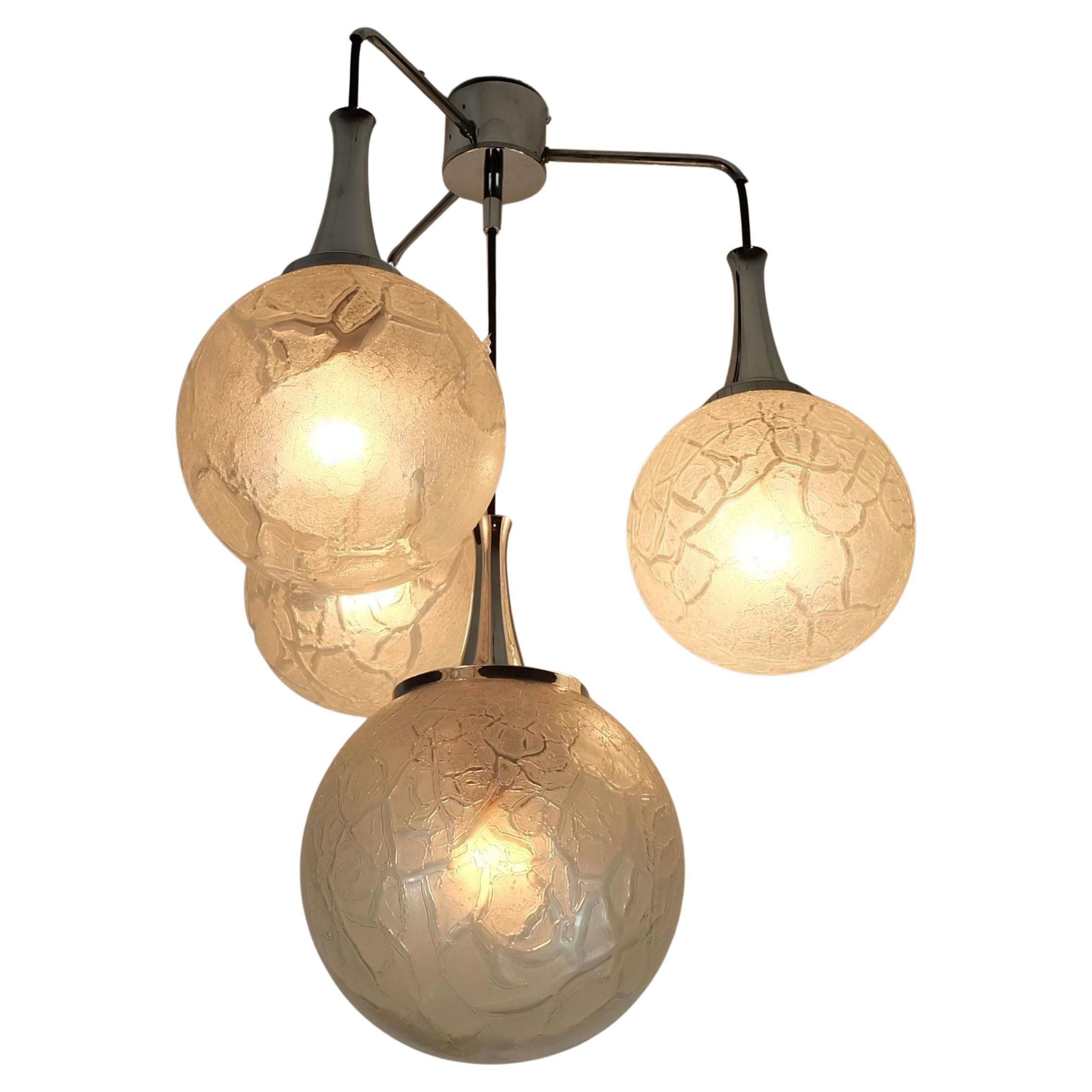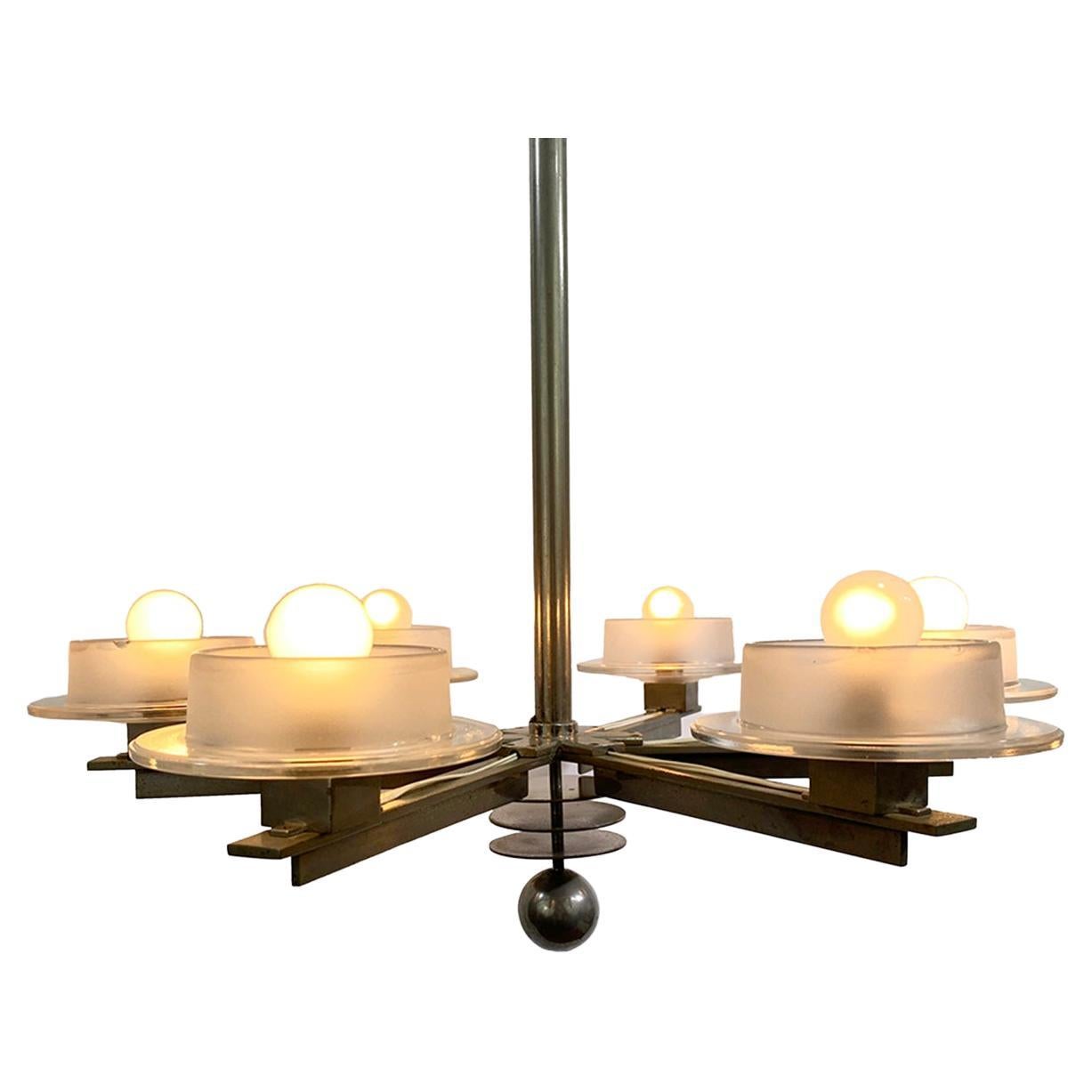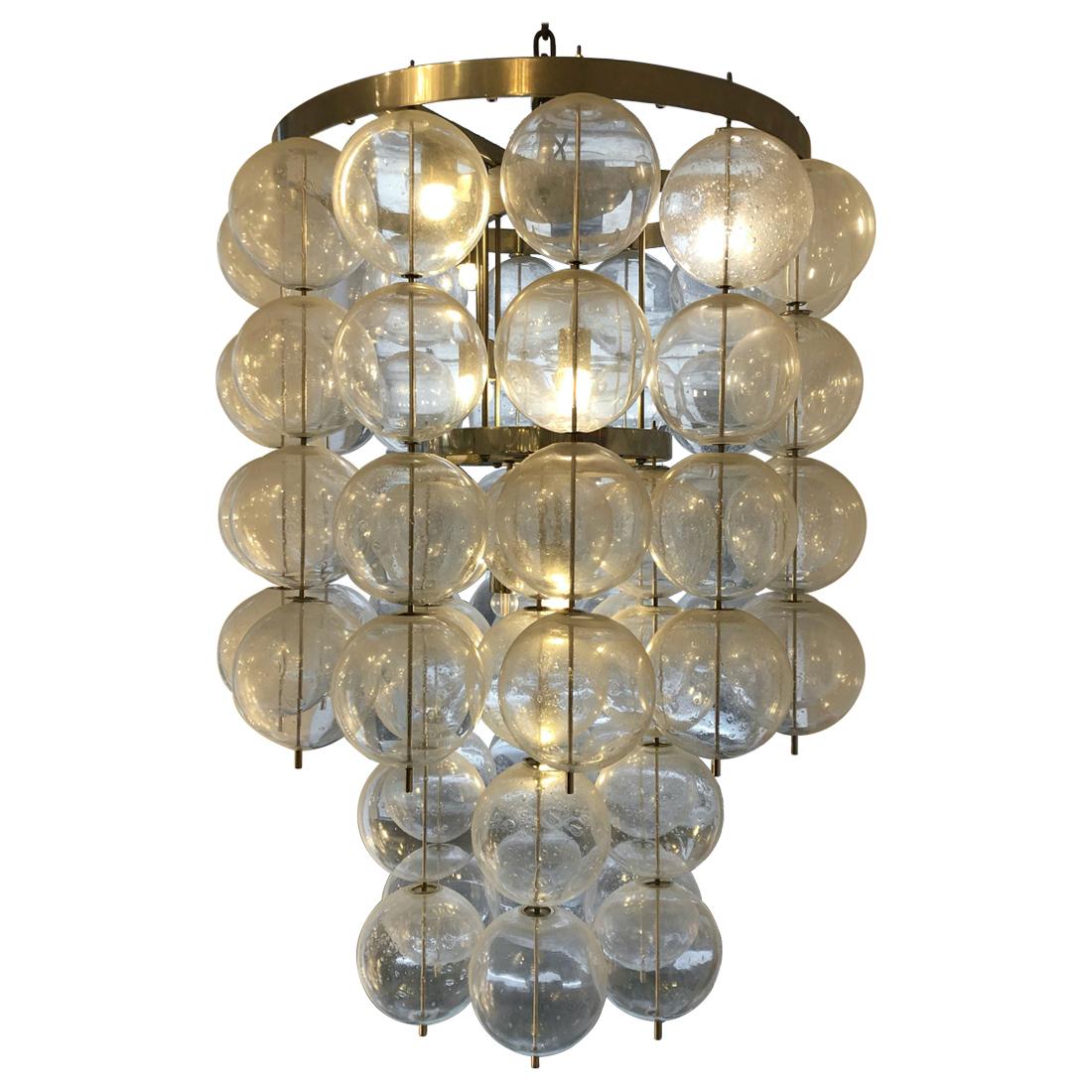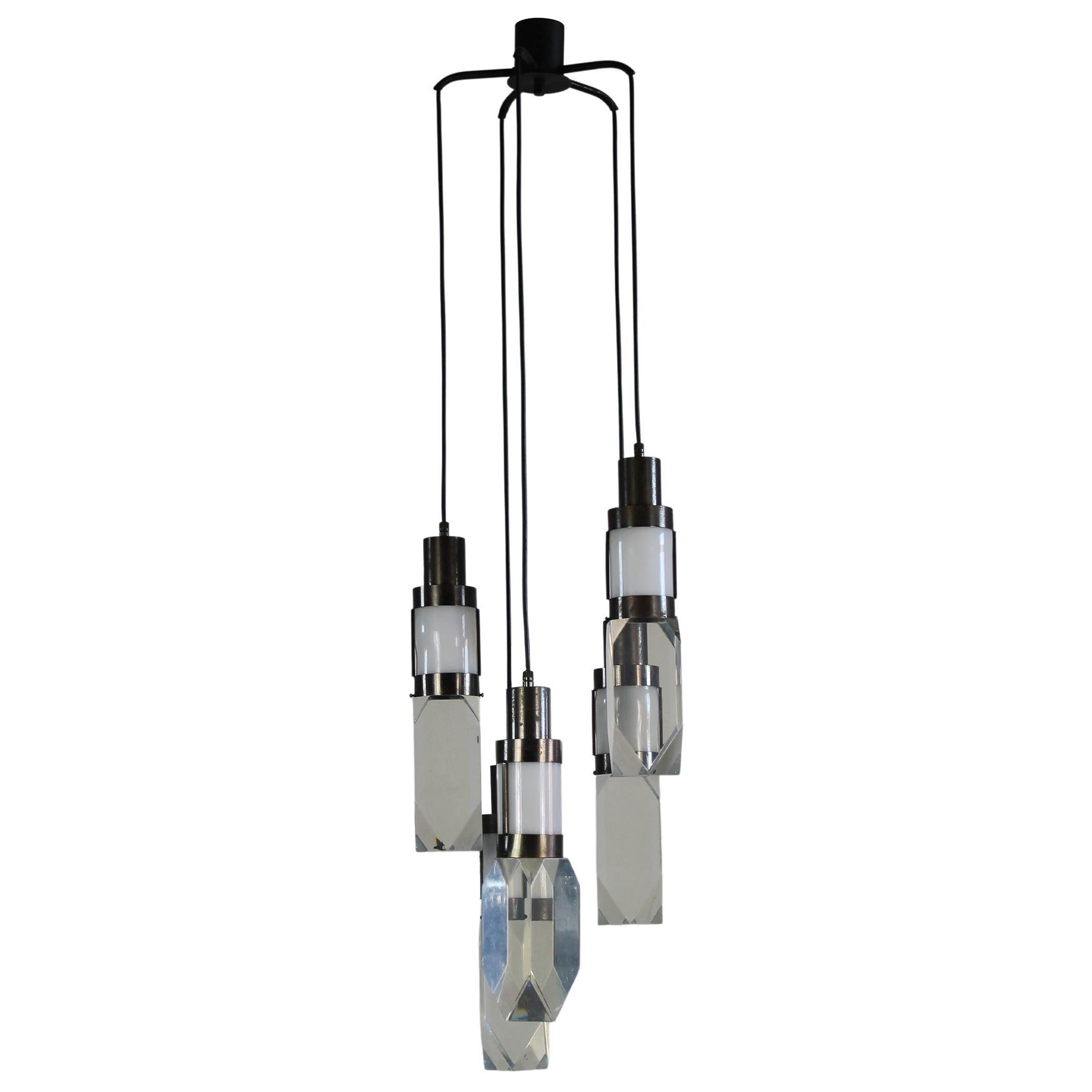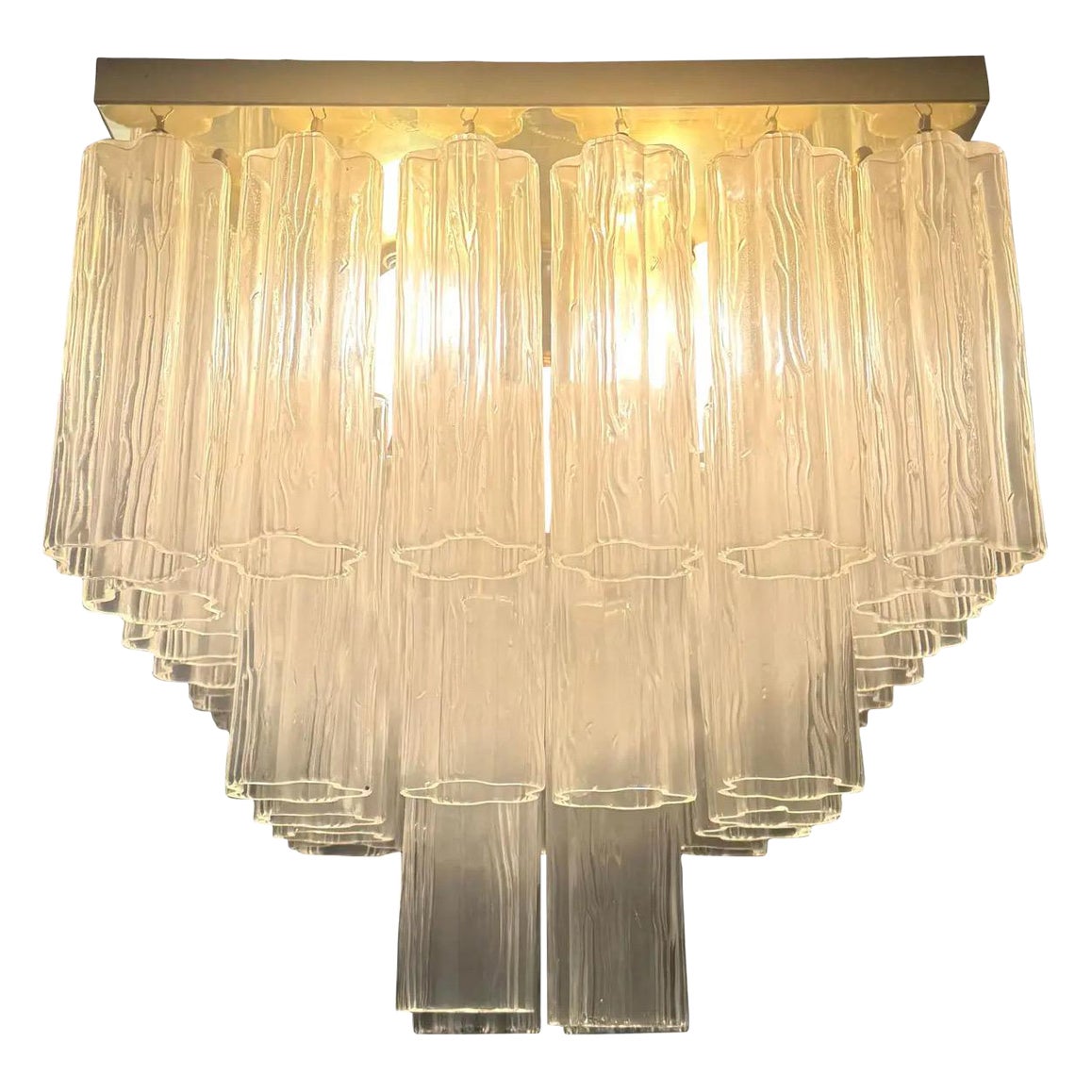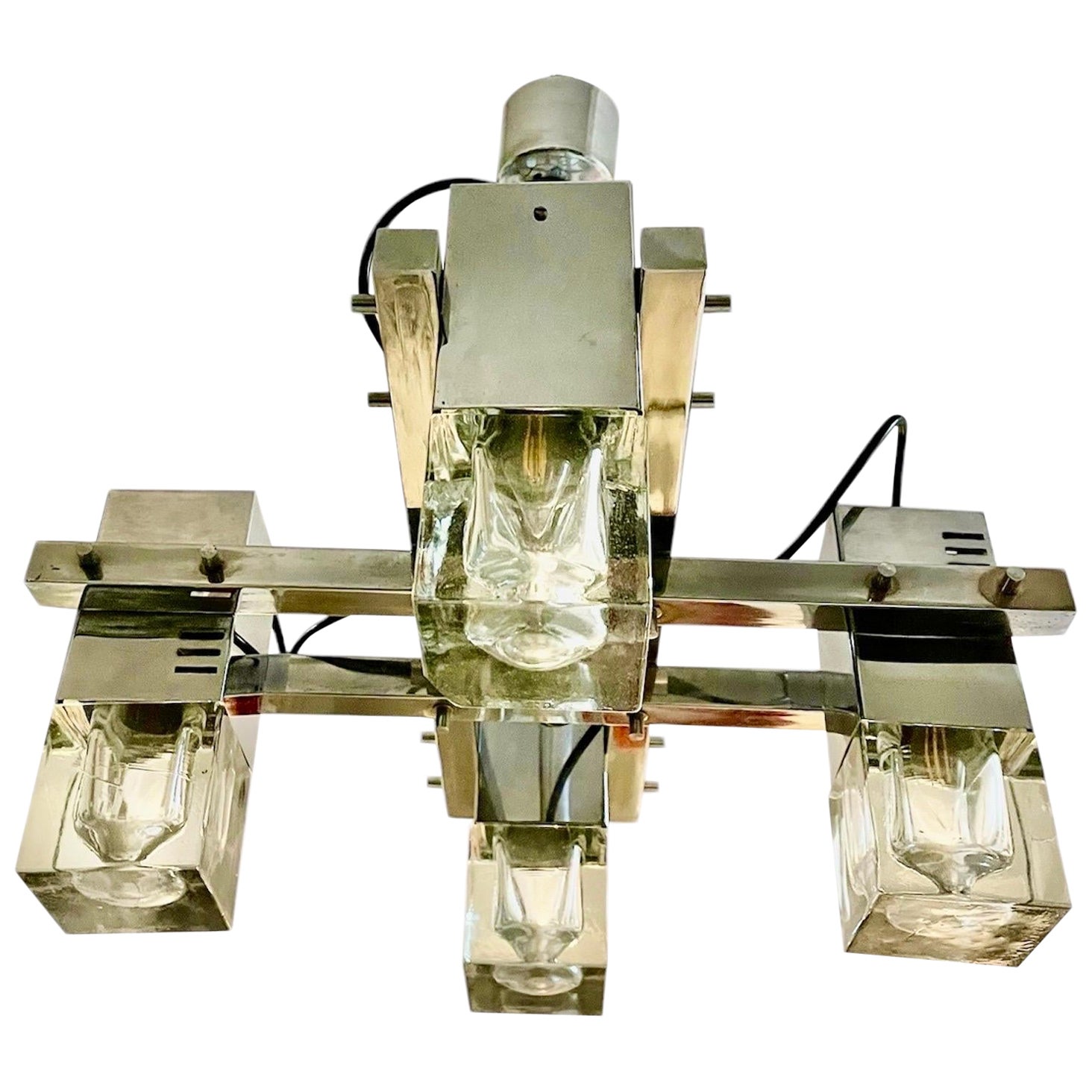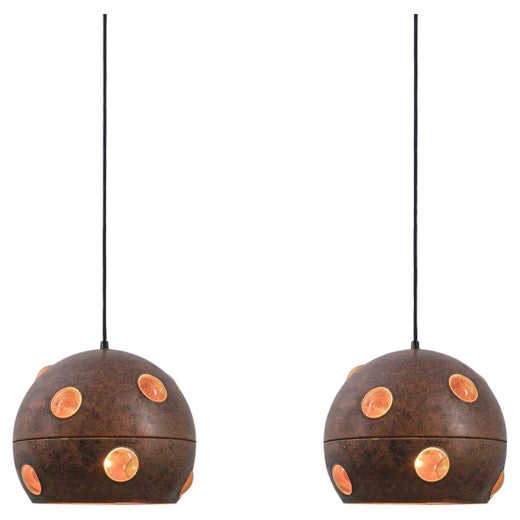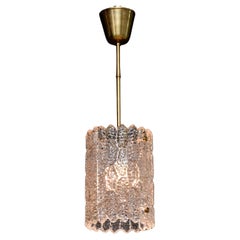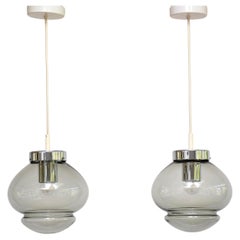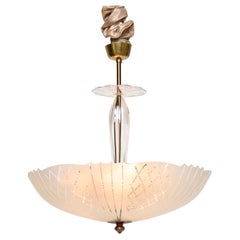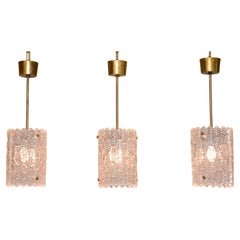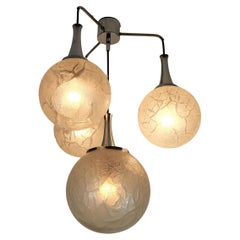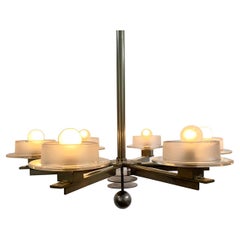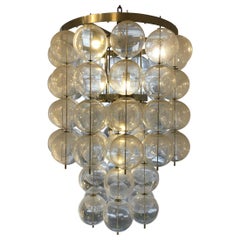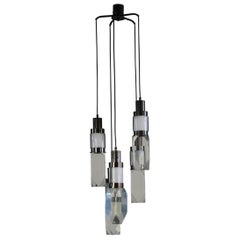Mid-century blown glass ceiling lamps/ flush mount by RAAK Amsterdam, ca. 1970
About the Item
- Creator:RAAK (Manufacturer)
- Dimensions:Height: 13 in (33 cm)Diameter: 9.85 in (25 cm)
- Power Source:Hardwired
- Style:Mid-Century Modern (Of the Period)
- Materials and Techniques:
- Place of Origin:
- Period:
- Date of Manufacture:ca. 1970
- Condition:Wear consistent with age and use.
- Seller Location:SON EN BREUGEL, NL
- Reference Number:1stDibs: LU9682240570082
RAAK
In Dutch, “raak” means “to hit” or “to hit the nail on the head.” Lighting company RAAK certainly accomplished that with its unique mid-century modern designs of futuristic, Space Age metal lamps, pendants and other lighting creations.
RAAK was founded in 1954 by Carel O. Lockhorn (1923–2004), a former employee of the Philips Lighting company in Eindhoven, the Netherlands. Under the tagline “Illuminated Architecture,” RAAK focused on producing elegant, sophisticated and modern lighting that would blend seamlessly with high-concept interiors.
During the 1960s, one of RAAK’s most well-known designs came from its in-house designer, Frank Ligtelijn, who created the Globe 2000 series of glass and chrome floor lamps, pendants and wall lights. Another key collaboration was with Dutch artist and glassmaker Willem van Oyen, who produced the iconic Chartres wall lights in 1964. Van Oyen’s Brutalist design evoked melted paintings and was inspired by the stained glass windows in the Chartres Cathedral in France.
In the 1970s, RAAK worked with several influential international artists, such as Italian designers Sergio Asti, Giotto Stoppino and Cesare Casati and Emanuele Ponzio, and Finnish designers Maija Liisa Komulainen (best known for her metallic, cylindrical Fuga lamp) and Tapio Wirkkala, creator of the handblown crystal Suomi pendant lamps.
Through the 1960s, 1970s and 1980s, RAAK enjoyed enormous success throughout Europe and worldwide for its modern lamps and decorative lighting. In 1974, Lockhorn sold RAAK to the furniture company ITT but remained its director until 1977. In 1980, RAAK merged with BIS Lighting and was renamed BISRAAK. Then, in 1999, the company entered into another merger, this time with Artilite B.V. and Indoor B.V., and became the Center for Light Architecture. It declared bankruptcy in 2011.
RAAK lighting continues to be highly coveted today among interior designers and avid vintage furniture collectors.
On 1stDibs, discover a range of vintage RAAK lighting, decorative objects and more.
- ShippingRetrieving quote...Shipping from: Eindhoven, Netherlands
- Return Policy
More From This Seller
View AllMid-20th Century Swedish Mid-Century Modern Flush Mount
Brass
Mid-20th Century Dutch Mid-Century Modern Chandeliers and Pendants
Glass
Mid-20th Century Swedish Mid-Century Modern Flush Mount
Brass
Mid-20th Century Swedish Mid-Century Modern Chandeliers and Pendants
Brass
Mid-20th Century Italian Mid-Century Modern Chandeliers and Pendants
Brass
Mid-20th Century Italian Mid-Century Modern Chandeliers and Pendants
Metal
You May Also Like
Vintage 1960s German Mid-Century Modern Chandeliers and Pendants
Chrome
Late 20th Century French Mid-Century Modern Chandeliers and Pendants
Chrome
Mid-20th Century European Mid-Century Modern Chandeliers and Pendants
Glass
Vintage 1970s Italian Mid-Century Modern Chandeliers and Pendants
Metal
Vintage 1960s Unknown Mid-Century Modern Flush Mount
Glass
Vintage 1970s Italian Mid-Century Modern Chandeliers and Pendants
Chrome
